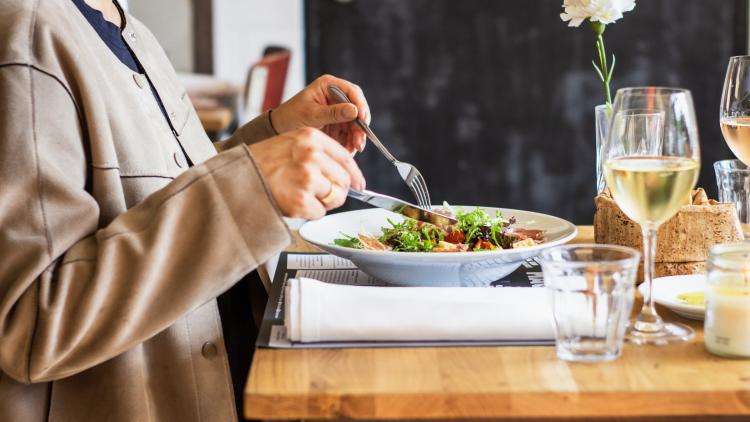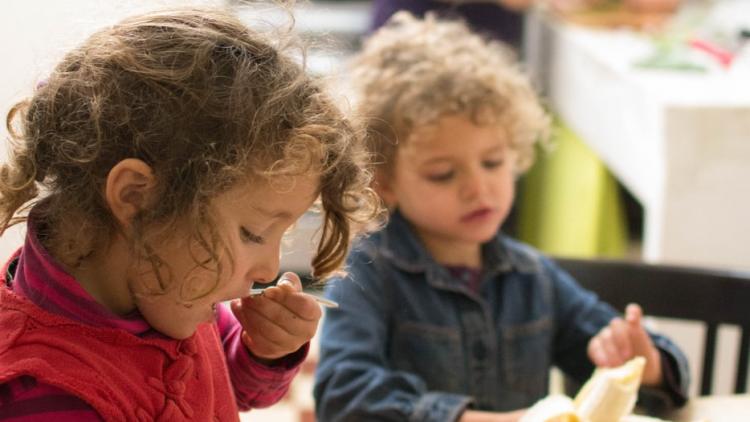Tips for individuals
In addition to being a commitment to the health of people and the planet, sustainable food is also a wonderful opportunity to promote local, sustainable economies. By supporting economies rooted in this kind of food and changing our eating habits, we can lead a more sustainable life.
What can people do to incorporate sustainable food into their everyday lives?
Practise responsible consumption
-
Ask about the origins of the fresh products you buy. The way a food product is made can have a significant effect on your health and that of the planet.
-
In these circuits there is only one intermediary between production and consumption (for example, a consumer cooperative, home delivery service organisations or greengrocers) or no intermediary in the case of direct sales (such as from the farm or farmers’ markets) and everyone involved is a small or medium-sized business that is geographically local. That way, the balance of forces between all parties allows for prices that help make production viable. Moreover, these formulas reconnect people with the source of their food, while boosting the local economy and trust between buyers and sellers.
-
This includes independent neighbourhood shops and stalls in municipal markets. These outlets are supplied by atomised wholesale chains, where negotiating power can be balanced out more between all the players in the chain (in contrast to the more extensive fresh food or supermarket chains, where a single, giant wholesaler decides the prices and conditions for producers and consumers). What is more, local shops strengthen the local economy and boost neighbourhood dynamism and social cohesion.
-
Prioritise local, seasonal food as far as possible. It is more likely that seasonal fruit and vegetables are grown locally and not in a greenhouse. They might also be fresher, tastier and cheaper. Local food strengthens the local economy and local farmers, favours food sovereignty, reduces the need for transport and storage in cold rooms, and preserves the food culture of our regions.
-
Prioritise certified ecological and agroecological products as much as possible. This way, you can avoid contributing to the generation and circulation of toxic chemical residues that can accumulate in ecosystems and in your body. You will also be helping to reduce pollution in aquifers, rivers, soil and the atmosphere, to close the nutrient cycle in the soil, to maintain cultivated and non-cultivated biodiversity, to improve animal welfare, and to support agricultural practices that adapt to and mitigate the climate emergency and combat the global extinction crisis.
-
Prioritise local and seasonal species and avoid the most overfished species. It is also important to avoid the most unsustainable fishing practices, like trawling.
-
Prioritise fair-trade products as much as possible, especially ones not produced locally, like coffee, sugar, etc. This is a trade system that seeks fairness, ensuring producers receive a fair price and enjoy decent working conditions. It focuses above all on improving the living conditions of vulnerable communities in the global South.
-
-
Visit a farm, urban allotment or a producer at a municipal market or farmers’ market a few times a year.
Adopt healthy habits
-
The Mediterranean diet, which is deeply rooted here in Catalonia, is considered to be one of the healthiest in the world. It is based on seasonal, fresh fruit and vegetables, fish, legumes, nuts, whole grains, tubers (potato and sweet potato) and extra virgin olive oil.
Barcelona embraces its cultural diversity and is home to a wealth of culinary knowledge and experience, which, when translated into dishes using fresh, diverse, quality, local, organic products, can also be part of a healthy, sustainable diet.
The planetary health diet is another good option: it is a global reference diet for adults symbolically represented by half a plate of fruit and vegetables, while the other half is made up of whole grains, plant proteins, oil, small amounts of animal protein and dairy, and some added sugars and starchy vegetables. This diet is flexible and adapts to specific needs, personal preferences and cultural traditions.
-
Cook at least two meals a week as a family, including the shopping process, and point out where the food has come from, who has produced and packaged it and who distributes it.
-
Prioritise fruit and varied sandwiches over ultra-processed industrial products, which usually contain too much salt, sugar or fat, too little fibre and protein, and too few micronutrients.
-
Swap animal protein for plant protein for at least two meals a week.
-
As much as possible, choose meat from organic, extensive livestock farming, and mixed systems of local crops and livestock. These systems take advantage of local resources of pasture land and organic forage crops, which require few external inputs; they raise the breeds of their region which, therefore, are adapted to it; and the animals have enough space and good living conditions so they hardly ever get ill.
-
Experience growing your own food, even if it's just every now and again, in a symbolic or partial way. Sign up to an urban or community allotment.
-
Put together a family recipe book of healthy, sustainable dishes by talking to elderly people around you, so as to pass on recipes and make them from organic, local, fresh products.
Reduce waste
-
Go shopping with a list and stick to it. Vegetables and fruit without an immaculate appearance may be good too.
-
Follow the preservation instructions on food labels.
Store food with the necessary ventilation and cool conditions (sometimes a pantry or cool place will do).
Check your fridge and freeze any food that might go off soon and cannot be consumed immediately.
After the best-before date, a food item may have lost taste or colour but it will not have gone off.
-
Collect recipes for making the most of food like stale bread or overripe fruit.
If you don’t manage to consume all you have in good condition, you can give it to food redistribution initiatives or community fridges.
-
Keep an eye on your organic bin and try to reduce the amount wasted.
-
Work out how much food packaging you use a week and set goals to reduce it.
Have drinks without packaging. Fill a reusable bottle with tap water, have a cup at work that you can use at the coffee machine, go to cellars with a demijohn for wine, use reusable cups at festivals, and so on.
Shop without single-use packaging: take your own trolley or shopping bag, canvas or biodegradable bags for fruit and vegetables, and lunch boxes or similar for bulk buying, takeaway food or restaurant leftovers.







